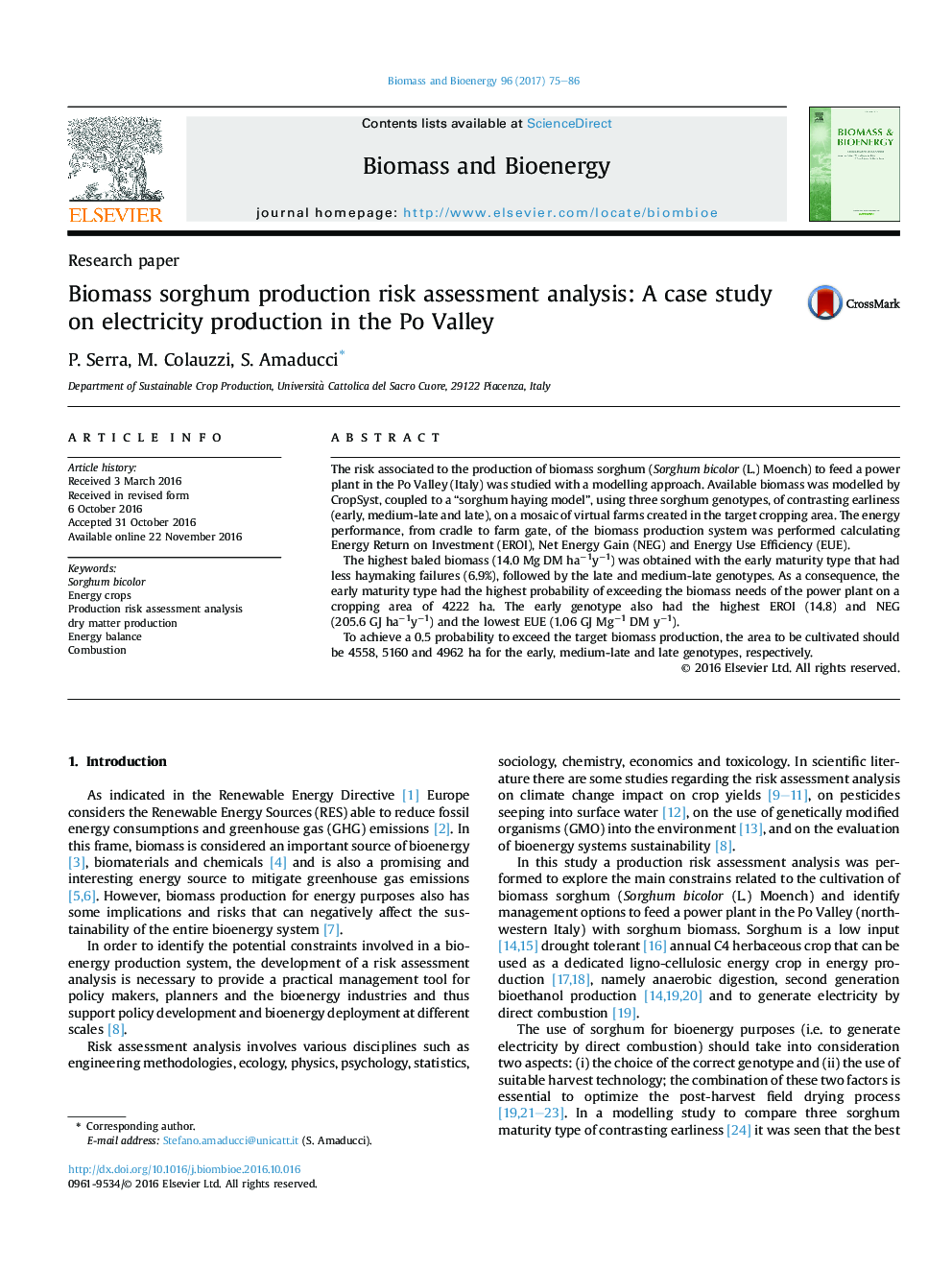| Article ID | Journal | Published Year | Pages | File Type |
|---|---|---|---|---|
| 4996405 | Biomass and Bioenergy | 2017 | 12 Pages |
â¢Production risk assessment analysis for the cultivation of biomass sorghum was performed.â¢Three sorghum genotypes of contrasting earliness were evaluated.â¢Genotype earliness affects the biomass production and energy performances.â¢Early genotype has the highest baled biomass and energy performance.â¢Late maturity types have the highest probability of haymaking failures.
The risk associated to the production of biomass sorghum (Sorghum bicolor (L.) Moench) to feed a power plant in the Po Valley (Italy) was studied with a modelling approach. Available biomass was modelled by CropSyst, coupled to a “sorghum haying model”, using three sorghum genotypes, of contrasting earliness (early, medium-late and late), on a mosaic of virtual farms created in the target cropping area. The energy performance, from cradle to farm gate, of the biomass production system was performed calculating Energy Return on Investment (EROI), Net Energy Gain (NEG) and Energy Use Efficiency (EUE).The highest baled biomass (14.0Â Mg DM haâ1yâ1) was obtained with the early maturity type that had less haymaking failures (6.9%), followed by the late and medium-late genotypes. As a consequence, the early maturity type had the highest probability of exceeding the biomass needs of the power plant on a cropping area of 4222Â ha. The early genotype also had the highest EROI (14.8) and NEG (205.6Â GJÂ haâ1yâ1) and the lowest EUE (1.06Â GJÂ Mgâ1 DM yâ1).To achieve a 0.5 probability to exceed the target biomass production, the area to be cultivated should be 4558, 5160 and 4962Â ha for the early, medium-late and late genotypes, respectively.
